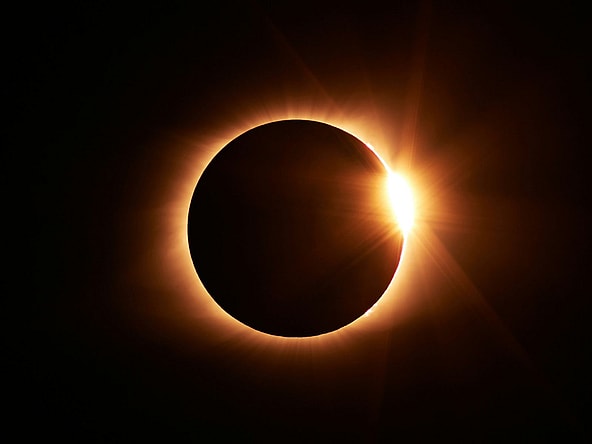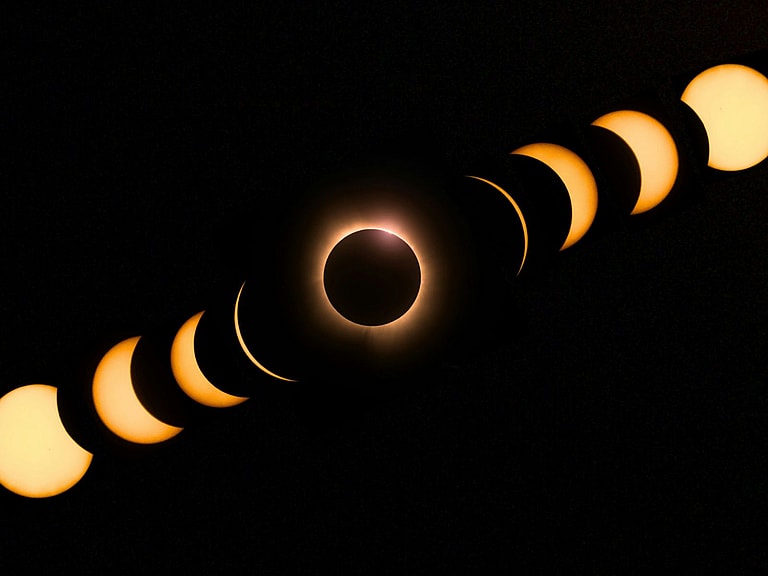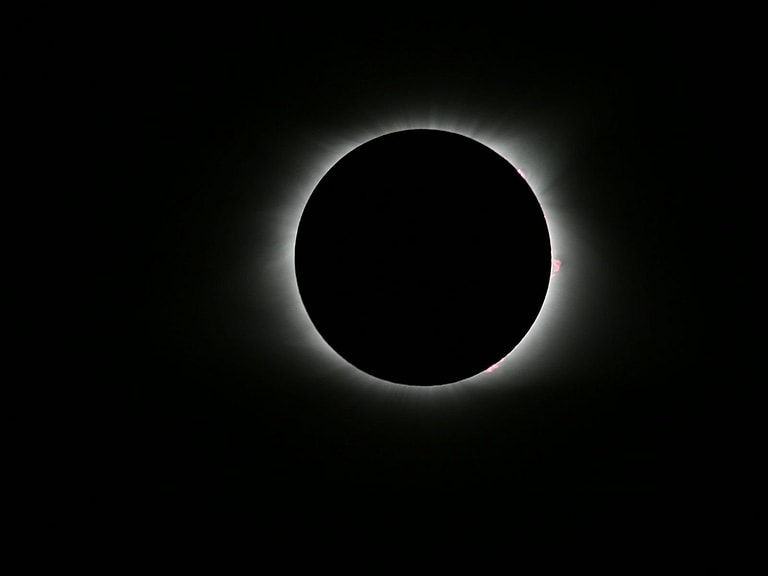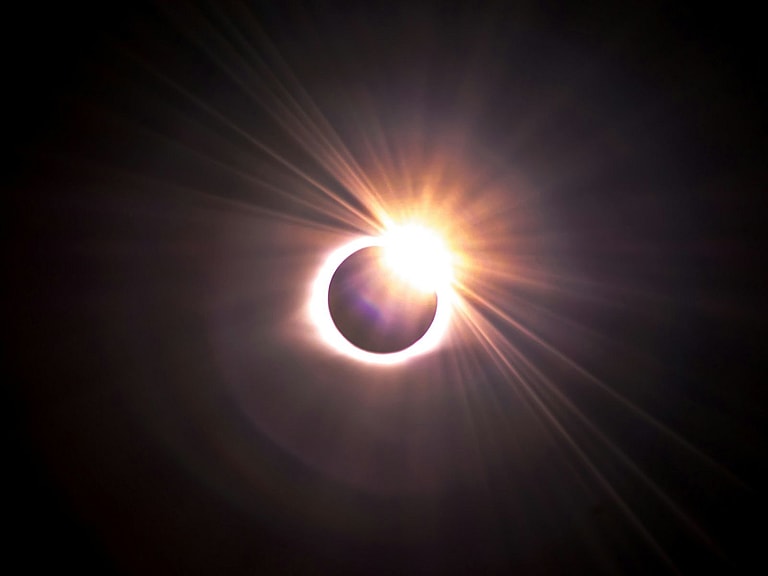
We never think too long about the fact that we’re on a floating globe that’s hurtling through space, only lucky enough to be in the right distance from the sun in a wild gravitational pattern to live. But during phenomena like eclipses, when the moon so happens to fall right in line with the sun to darken parts of the world for a few minutes, it reminds us of it.
So when will the next solar eclipse happen? Oddly enough, there is a lot of solar eclipse that happens around the world, it just depends on how lucky we are to have it crossing a few of our states. And after this most recent one, space lovers might be on the edge of their seats to watch the next solar eclipse, whether it’s another total or just a partial eclipse.
Related: Weird Space Facts About Our Universe
What Happens During a Solar Eclipse?

Before we enjoy the next solar eclipse, let’s figure out what happens during it that makes it so exciting. There are two kinds of eclipses: a solar eclipse and a lunar eclipse.
Solar eclipses can only happen during a New Moon, or when the sun and Earth are on opposite sides of the moon. When a solar eclipse happens, the moon aligns straight, or almost straight, between the Earth and the sun.
This is where three stages come in: total, annular, or partial. A total eclipse blocks out the sun completely, leaving our roads and backyard dark. A partial is just as it’s said, only part of the sun is blocked by the moon. An annular is similar to a total, however, a thin ring of light is around the moon instead of completely blocking it.
A lunar eclipse happens when the moon moves into Earth’s shadow, blocking the sun from hitting the moon, and causing the moon to darken. However, a solar eclipse is much more exciting. Similar to the solar eclipse, there are three types: partial and total, which work the same way.
The Importance of Eclipse Glasses
Whenever a solar eclipse is on its way, you might see bins of these plastic glasses that block out all light, except for the sun. Why is this important? It’s so you can safely look at the sun, and watch the moon move in front of the sun, without damaging your retinas from the blinding rays of light.
Even though the moon is sitting in front of the sun, whether for a partial or total eclipse, there are still bits of UV rays that are making their way to Earth. Even in small amounts, observing the sun for a certain period will damage your retinas.
The Most Recent Solar Eclipse
The most recent solar eclipse in the United States was April 8th, 2024. It also hit both Canada and Mexico during its path. The path of totality ran diagonally from the southwest to the northeast, hitting states like Oklahoma, Arkansas, Missouri, Illinois, Kentucky, New York, and Maine. The length of the eclipse lasted for almost 5 minutes, giving viewers plenty of time to look at the sun.
The Next Solar Eclipse

Solar eclipse actually happens more often than you might think. Of course, it really depends on how far you want to travel. For the next solar eclipse in the United States, though, you’ll have to wait a while.
Alaska will have a total solar eclipse on March 30, 2033, however, you’ll have to travel to remote Alaska, near the northwestern part of the state, where the totality will last around 2 and a half minutes. But for those more south, you’ll need to wait until 2044, near August 22nd. The totality will only be visible for Montana, North Dakota, and South Dakota.
But for another large total eclipse, similar to the one we just witnessed that ran through several states, then you’ll just have to wait one more year to 2045, around August 12th again, where an eclipse will run from northern California to Florida.
Around the World
Want to travel more throughout the years and plan to see one abroad? No worries, there are several to keep an eye out for. 2026 will see a total solar eclipse in Spain, a beautiful country to visit with the added benefit of an eclipse.
For the impatient folk, another eclipse will take place this year, on October 2nd, but will only be an annular eclipse, which is known as the “ring of fire”. This will be visible across a section of Chile and Argentina, as well as a few Pacific Islands.
Some more solar eclipses around the world include:
- November 25, 2030: Namibia, Botswana, South Africa, Lesotho, Australia
- March 20, 2034: Nigeria, Cameroon, Chad, Sudan, Egypt, Saudi Arabia, Iran, Afghanistan, Pakistan, India, China
- September 2, 2035: China, North and South Korea, Japan
- July 13, 2037: Australia and New Zealand
Lunar Eclipses
Interested in lunar eclipses? The most recent one happened on March 25th, 2024, and was a penumbral eclipse, which is just a partial shadow and is very hard to see. The next one will be a partial lunar eclipse, which will be a bit easier to see, on September 18th, 2024. The next total lunar eclipse in America will be March 14th, 2025.
Check Out: Strangest Objects in the Universe
Conclusion

With the most recent solar eclipse making such big headlines for everyone around the country, the next solar eclipse will surely bring back the same love and interest in space.
While we don’t have that long to wait for solar eclipses around the world, the next solar eclipse that will be just as large-scale as the most recent one will not be around for quite some time. Thankfully, for those who travel, there are so many more eclipses that you can check out until then.


